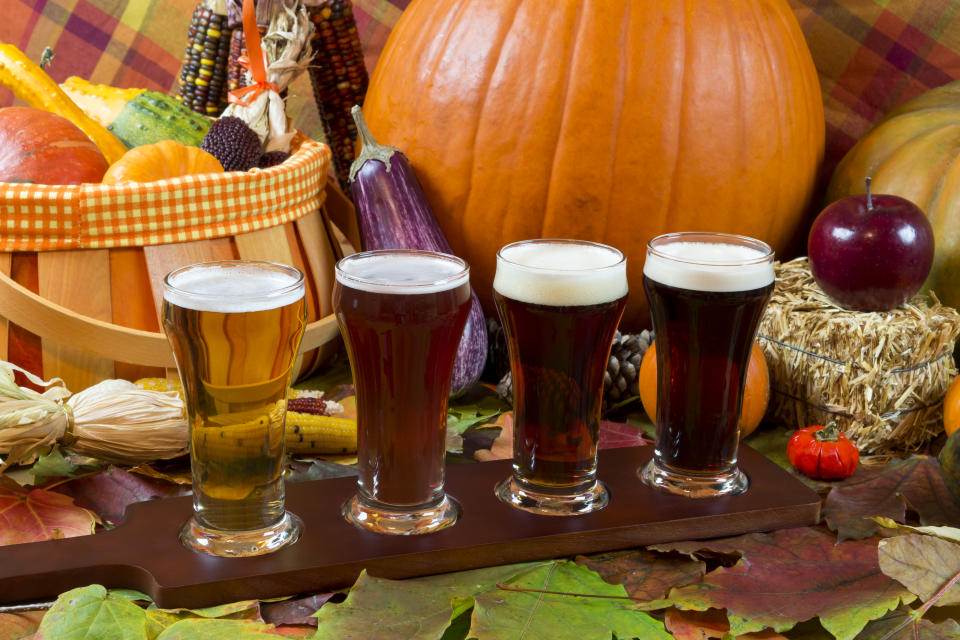Here's how much more you’re paying to get that pumpkin spice
Indulging in your pumpkin spice vice is costing you more money — and that’s how grocers designed it.
Based on a cross-section of 80 items from six retailers, the average pumpkin spice product was marked up by 8.8% compared with its regular version, according to a new study from MagnifyMoney by LendingTree. That’s up from 8% in 2017, the last time the study was conducted.
“Retailers can say, ‘if you want it now then we're going to charge more for it,’” Derek Miller, senior research analyst at LendingTree, said.
A handful of products saw an insignificant change compared with their non-seasonal flavor counterparts, but — overall — the markups heavily outweighed the discounts.

The pumpkin spice premium on coffee
Arguably, the jewel in the pumpkin spice crown — and what started it all — is the Starbucks Pumpkin Spice Latte, Miller said. Introduced in 2003, it's become the company’s signature seasonal beverage and spawned Americans’ insatiable appetite for all things pumpkin.
The premium tacked on the drink is an average of 15.9% more than its non-pumpkin counterpart. While Starbucks PSL purists might not accept substitutions, copy-cats from McDonald’s and Dunkin’ are significantly cheaper and cost marginally more, if not the same, as the rest of their menu options.
Who are the worst offenders?

Out of Amazon Fresh, FreshDirect, Target, Trader Joe’s, Walmart, and Whole Foods, Trader Joe’s was the biggest offender of the pumpkin spice tax. Across the board, pumpkin-spiced products at Trader Joe’s were 17.8% more expensive than their standard counterparts.
Case in point: a 15 oz. box of Joe's O's cereal retails for $1.99 whereas a 12 oz. box of Pumpkin O's cereal — essentially the same cereal but pumpkin-flavored — costs $2.49, which is over a 56% hike per ounce.
By contrast, pumpkin spice products at Target were of 3.1% cheaper on average than the regular product.
One reason for Trader Joe’s elevated pumpkin spice tax is that it predominantly sells house-label products, whereas a big-box store can tap into a broader supply chain and leverage economies of scale, Miller said.
On a per-product basis, Whole Foods is the worst offender of the pumpkin spice tax. Its house-brand, 365 Everyday, carries chocolate sandwich cremes at $0.15 per ounce, but when injected with that special autumn spice, the sandwich cremes cost $0.41 per ounce, accounting for a 175.1% mark-up.
Passed its peak?

The popular flavor profile has permeated coffee, tea, creamer, cookies, bagels, oatmeal, cereal, yogurt, ice cream, pancakes, waffles, pasta sauce, and even marshmallows and beer. The autumnal trend has saturated the consumer market so heavily that pumpkin spice flavored dog treats have been churned out.
“It was new and then maybe it became uncool a little bit or people made fun of it, and that definitely started to happen,” he said.
The trend could be a victim of its own success, with tepid signs that pumpkin spice could be falling out of favor — at least according to Google Trends. The search term ‘pumpkin spice’ might have reached its peak in 2018, but without the full picture of what people are Googling this fall, it’s too close to call.
Another possible explanation for the dip, as Miller pointed out, is that “people have other things on their mind.”
“[If] we see in 2021 that people are back to searching ‘pumpkin spice', [it] may have come out that we were a little too soon on saying 2018 was definitely the peak,” he said.
Stephanie is a reporter for Yahoo Money and Cashay, a new personal finance website. She can be reached at stephanie.asymkos@yahoofinance.com. Follow her on Twitter @SJAsymkos.
Read more information and tips in our Spending section






